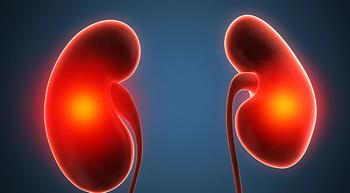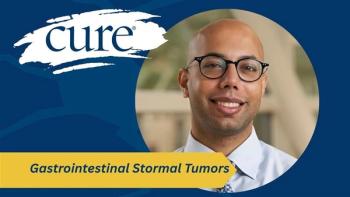
FDA Approves Stoboclo and Osenvelt as Biosimilars Across Some Cancers
Key Takeaways
- Stoboclo and Osenvelt, biosimilars of Prolia and Xgeva, are approved for various cancer-related bone conditions, offering cost-effective alternatives.
- FDA approval confirms therapeutic equivalence of these biosimilars to the original drugs, ensuring safety and efficacy.
Stoboclo and Osenvelt, FDA-approved biosimilars of Prolia and Xgeva, are now available in the U.S. for variois cancers and cancer-related bone conditions.
Stoboclo (denosumab-bmwo) and Osenvelt (denosumab-bmwo), biosimilars referencing Prolia (denosumab) and Xgeva (denosumab), respectively, are now commercially available in the U.S. for indications including breast cancer, prostate cancer, multiple myeloma and bone metastases from solid tumors, according to a news release from Celltrion.
A biosimilar medication is a more affordable alternative to another specific medication, like the immunotherapies used to treat types of cancer, according to the American Cancer Society website. Although these biosimilars are not exact copies of the original medication, they are very similar and follow strict guidelines provided by the U.S. Food and Drug Administration (FDA) to ensure they are just as safe and work the same as the name brand biologic medicines. Additionally, biosimilar medications help improve access to a specific medication and lower costs.
They are approved by the FDA for all indications of Prolia and Xgeva.
"We are pleased to have achieved a global settlement with Amgen regarding our denosumab biosimilars," Thomas Nusbickel, chief commercial officer at Celltrion USA, said in the news release. "We are proud to introduce our denosumab biosimilars to the U.S. market, offering patients and healthcare professionals a valuable alternative treatment option. Building on our strong heritage in biosimilars, Celltrion remains committed to being a trusted partner for both patients and physicians, while contributing to the overall sustainability of healthcare systems."
The availability of these drugs further expands its portfolio, delivering cost-effective and high-quality biologic medicines to a wider range of patients in the U.S., as per the release.
Stoboclo available in a 60 milligram per milliliter injection and is approved to increase bone mass in men at high risk for fracture receiving androgen deprivation therapy for nonmetastatic prostate cancer, as well as to increase bone mass in women at high risk for fracture receiving adjuvant aromatase inhibitor therapy for breast cancer. Moreover, the agent is approved treat postmenopausal women with osteoporosis at high risk for fracture, to increase bone mass in men with osteoporosis at high risk for fracture, and to treat glucocorticoid-induced osteoporosis in men and women at high risk for fracture.
The FDA approval was based on comprehensive data and clinical evidence confirming therapeutic equivalence to Prolia.
Osenvelt is available in a 120 milligram per 1.7 milliliter (70 milligram per milliliter) injection and is indicated to prevent skeletal-related events in patients with multiple myeloma and in patients with bone metastases from solid tumors, and to treat adults and skeletally mature adolescents with giant cell tumor of bone that is unresectable or where surgical resection is likely to result in severe morbidity.
This FDA approval was based on a robust clinical trial and comprehensive data confirming therapeutic equivalence to Xgeva.
Stoboclo and Osenvelt are supported by Celltrion's comprehensive patient support programs designed to help empower patients to navigate their treatment journeys.
Safety of the Drugs
For Stoboclo, common side effects in patients experiencing bone loss due to hormone ablation for cancer, joint pain and back pain were reported in at least 10% of cases. Pain in extremity and musculoskeletal pain have also been noted in clinical trials.
Moreover, for patients with postmenopausal osteoporosis (occurring in more than 5%) included back pain, pain in extremity, high cholesterol, musculoskeletal pain and bladder inflammation. Pancreatitis has also been reported in clinical trials. Among men with osteoporosis, reported side effects included back pain, joint pain and nasal congestion. In patients with glucocorticoid-induced osteoporosis, side effects seen in more than 3% included back pain, high blood pressure, bronchitis and headache.
For Osenvelt, side effects seen in 25% or more of patients with bone metastases from solid tumors included fatigue or weakness, low phosphate levels and nausea. In those with multiple myeloma, side effects reported in 10% or more included diarrhea, nausea, anemia, back pain, low platelet counts, swelling in the limbs, low calcium levels, upper respiratory infections, rash and headache.
For patients with giant cell tumor of bone, commonly reported side effects included joint pain, headache, nausea, back pain, fatigue and pain in extremity. In cases of hypercalcemia of malignancy, side effects reported in more than 20% of patients included nausea, shortness of breath, decreased appetite, headache, swelling in the limbs, vomiting, anemia, constipation and diarrhea.
Reference
“Celltrion USA announces U.S. launch of denosumab biosimilars, Stoboclo and Osenvelt (denosumab-bmwo),” Celltrion, July 7, 2025.
For more news on cancer updates, research and education,





